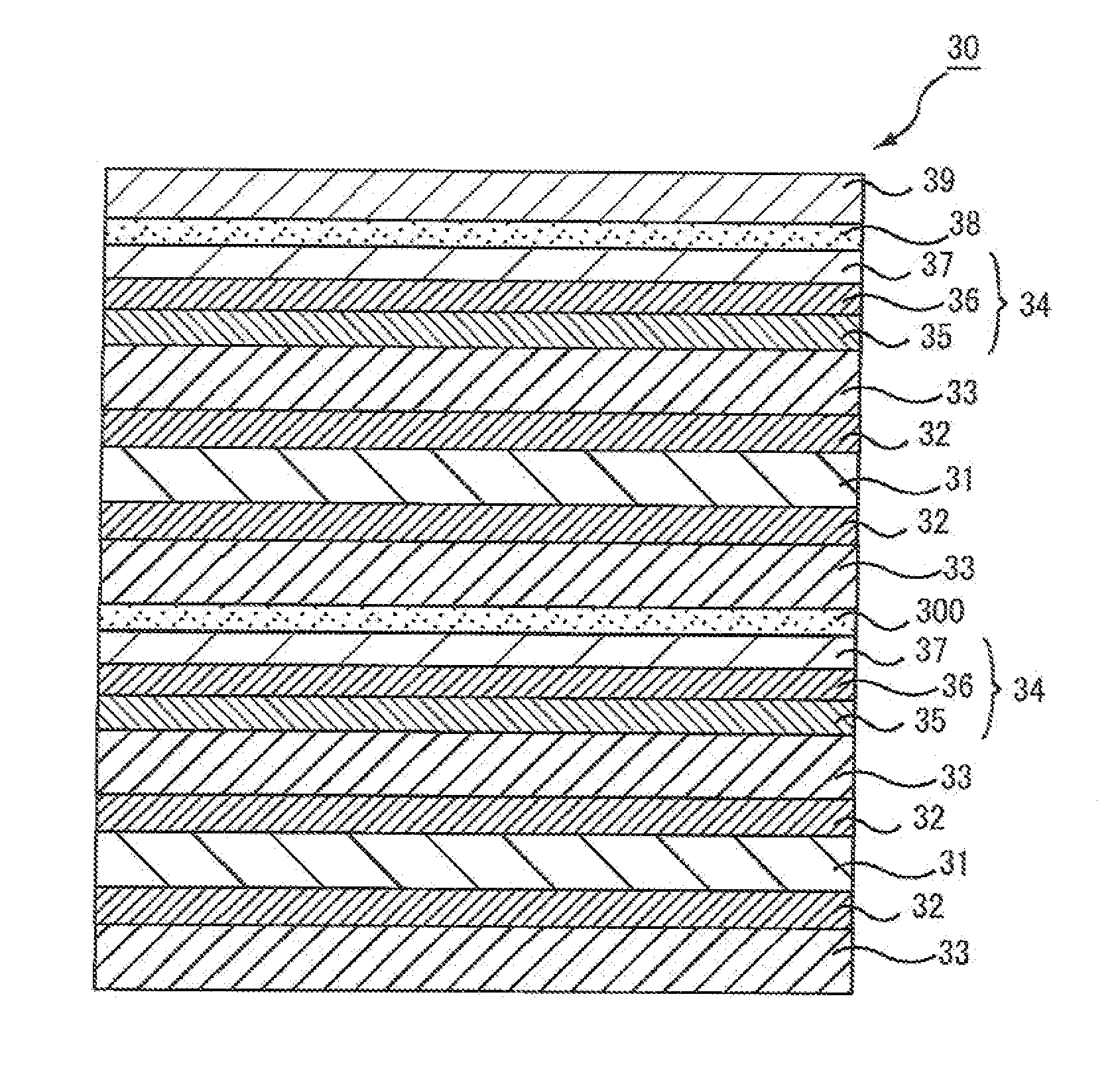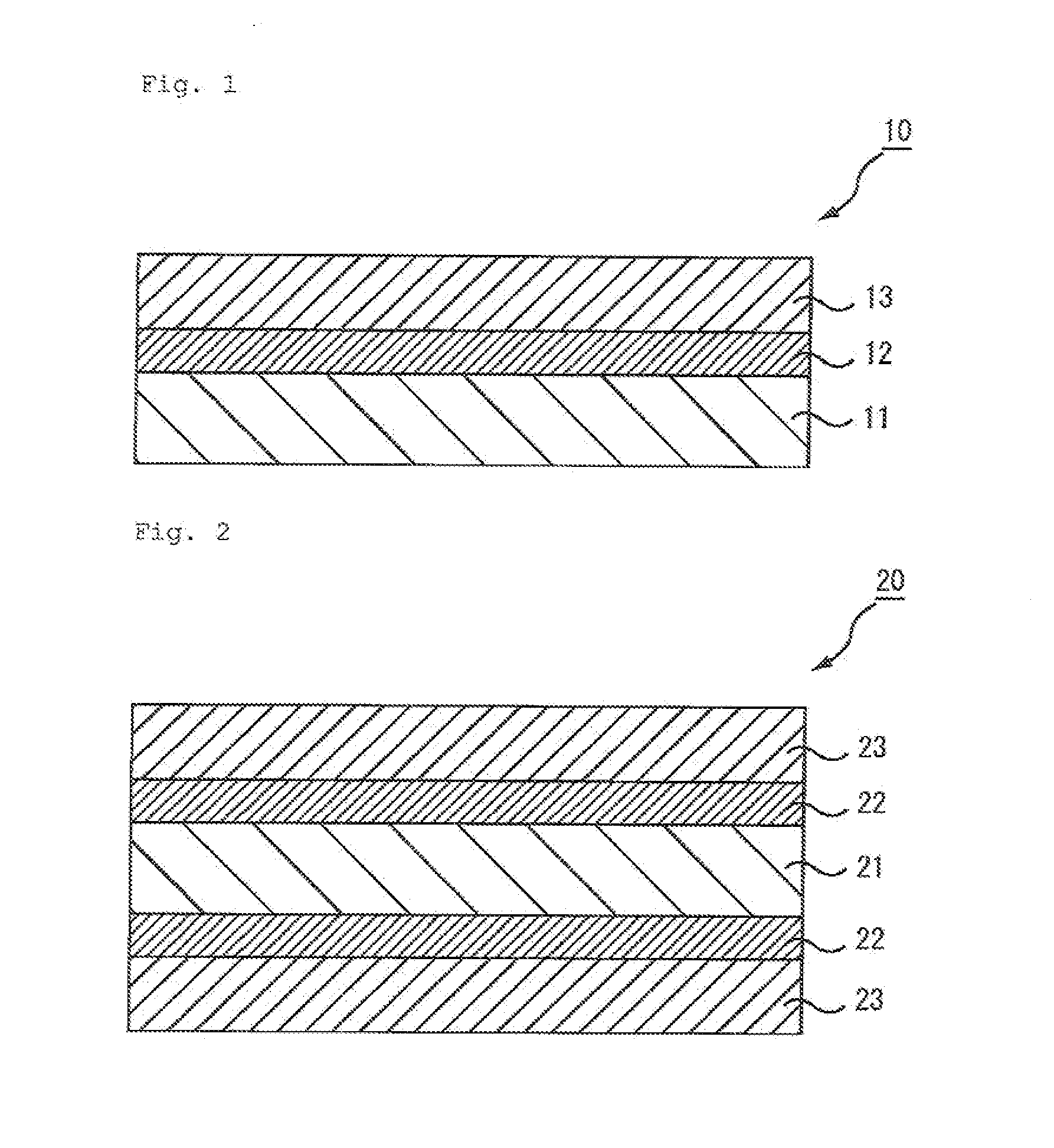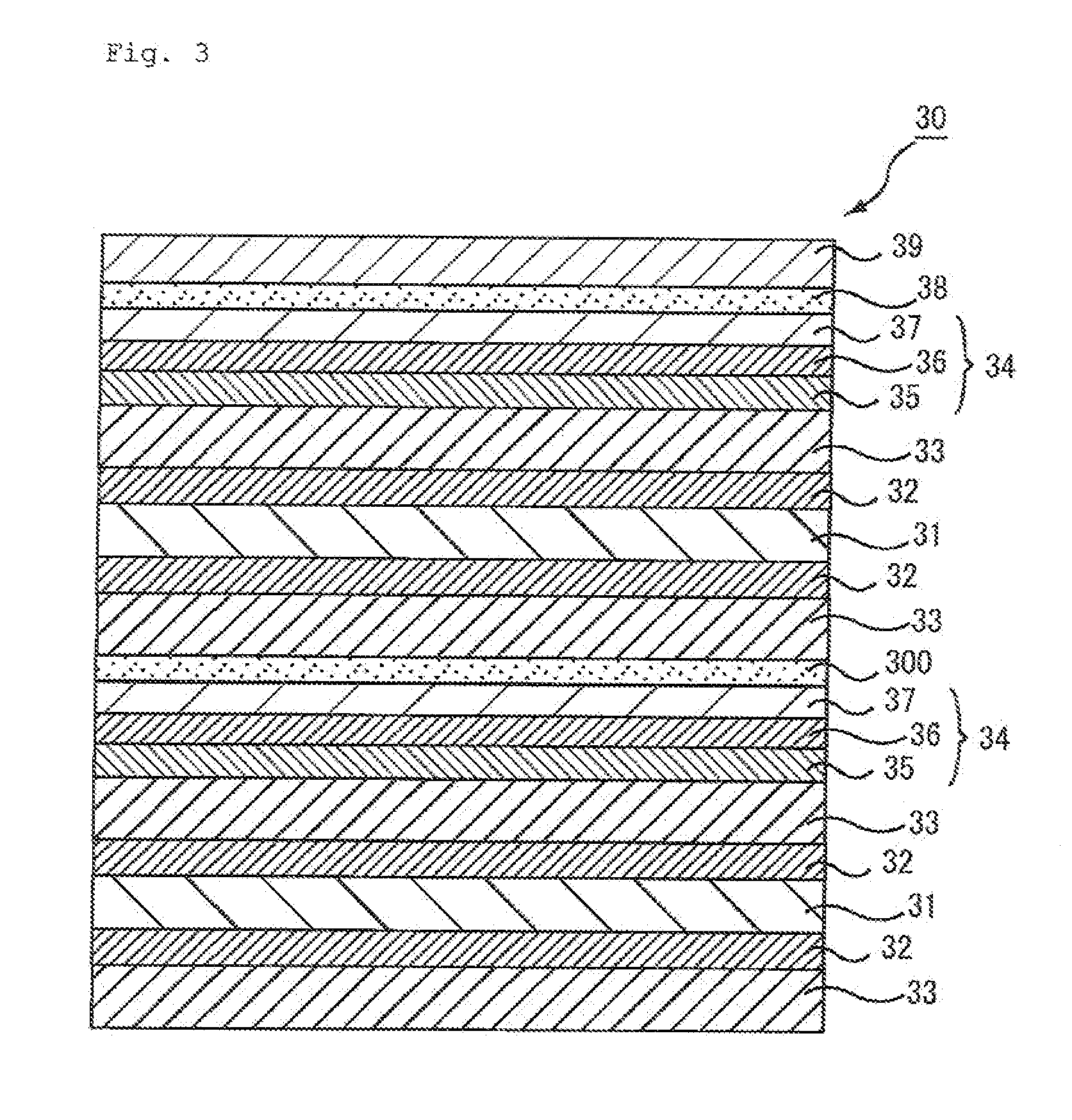Optical layered body, polarizer and image display device
a technology of optical layered body and polarizer, which is applied in the direction of polarising elements, instruments, synthetic resin layered products, etc., can solve the problems of poor heat and humidity resistance of cellulose ester film, affecting the display quality of image display devices, and reducing the performance of polarizers such as polarization and hue control, so as to achieve excellent adhesion between polyester base and hard coat layer
- Summary
- Abstract
- Description
- Claims
- Application Information
AI Technical Summary
Benefits of technology
Problems solved by technology
Method used
Image
Examples
example 1
[0227]Melting polyethylene terephthalate was molten at 290° C. and extruded into a sheet-shaped film through a film-forming dye. The film was made in contact with a rotational quenching drum chilled with water for cooling purposes, so that an unstretched film was produced.
[0228]The unstretched film was preheated at 120° C. for a minute, and then stretched by 4.5 times using a biaxial film stretching tester (TOYO SEIKI SEISAKU-SHO LTD.). Then, the composition 1 for a primer layer was uniformly applied to both faces of the stretched film with a roll coater.
[0229]Next, the resulting film was dried at 95° C. and stretched by 1.5 times in a direction at 90 degrees to the stretching direction. As a result, a polyester base (retardation of 10000 nm, film thickness of 100 μm, nx of 1.70, ny of 1.60, Δn of 0.10) was obtained. The primer layer had a refractive index of 1.65 and a film thickness of 100 nm.
[0230]To the formed primer layer, the composition 1 for a hard coat layer was applied wit...
example 2
[0233]An optical layered body was produced in the same manner as in Example 1 except that the composition 3 for a hard coat layer was used instead of the composition 1 for a hard coat layer. The hard coat layer had a refractive index of 1.61.
example 3
[0234]Melting polyethylene terephthalate was molten at 290° C. and extruded into a sheet-shaped film through a film-forming dye. The film was made in contact with a rotational quenching drum chilled with water for cooling purposes, so that an unstretched film was produced.
[0235]The unstretched film was preheated at 120° C. for a minute, and then stretched by 5.2 times using a biaxial film stretching tester (TOYO SEIKI SEISAKU-SHO LTD.). Then, the composition 2 for a primer layer was uniformly applied to both faces of the stretched film with a roll coater.
[0236]Next, the resulting film was dried at 95° C. and stretched by 1.2 times in a direction at 90 degrees to the stretching direction. As a result, a polyester base (retardation of 9000 nm, film thickness of 60 μm, nx of 1.73, ny of 1.58, Δn of 0.15) was obtained. The primer layer had a refractive index of 1.57 and a film thickness of 20 nm.
[0237]To the formed primer layer, the composition 1 for a hard coat layer was applied with a...
PUM
| Property | Measurement | Unit |
|---|---|---|
| refractive index | aaaaa | aaaaa |
| thickness | aaaaa | aaaaa |
| refractive index | aaaaa | aaaaa |
Abstract
Description
Claims
Application Information
 Login to View More
Login to View More - R&D
- Intellectual Property
- Life Sciences
- Materials
- Tech Scout
- Unparalleled Data Quality
- Higher Quality Content
- 60% Fewer Hallucinations
Browse by: Latest US Patents, China's latest patents, Technical Efficacy Thesaurus, Application Domain, Technology Topic, Popular Technical Reports.
© 2025 PatSnap. All rights reserved.Legal|Privacy policy|Modern Slavery Act Transparency Statement|Sitemap|About US| Contact US: help@patsnap.com



